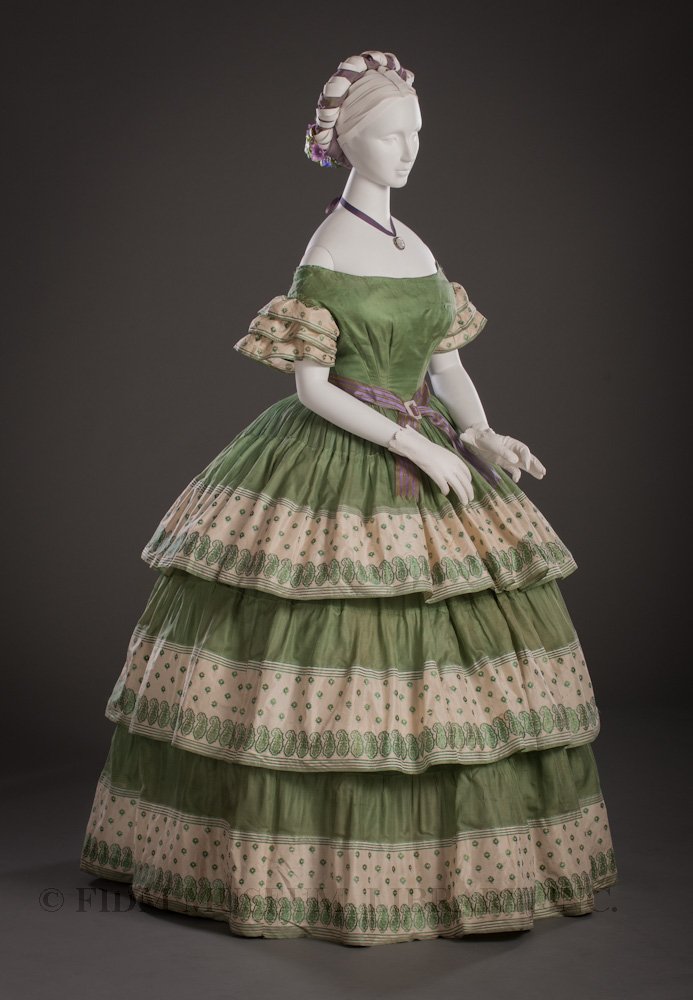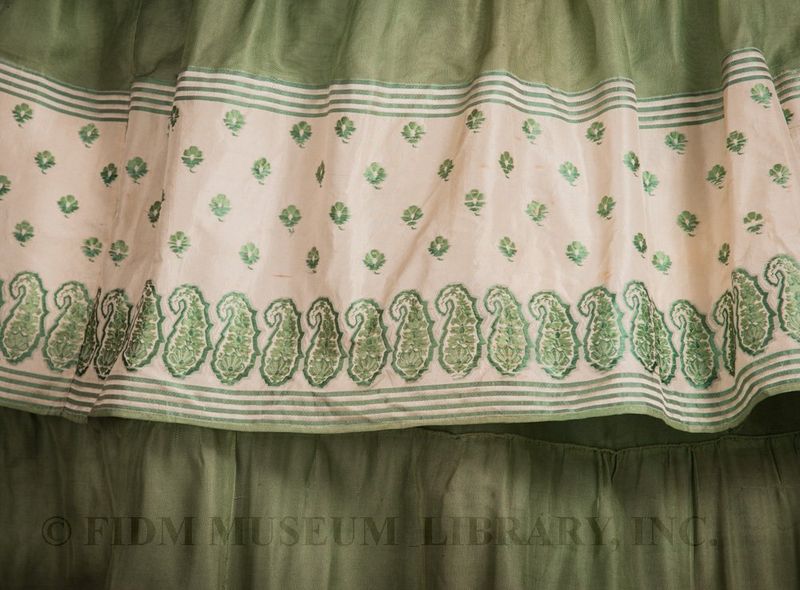
c. 1855-1860
Gift of Jane M. Gincig and Patricia Larson Kalayjian
S2011.1087.189
With a low, curved neckline and short sleeves, this silk gauze dress was meant for evening. Day dresses of this era featured long sleeves and modest necklines, but evening dresses featured alluringly low-cut necklines that exposed neck, shoulders, arms, and décolletage. The bodice is shaped by vertical bust darts and interior boning. As was typical of 1850s evening bodices, it fastens at center back with a hook and eye closure.
The symmetrical fullness of the bell-shaped skirt is controlled by cartridge pleats at the waist. The skirt is embellished with three flounces, each one slightly wider than its predecessor. Cascading layers of flounces were a key feature of 1850s skirts and can be used to date dresses to this decade. Often featuring a contrasting print, fringe, or tassels, these flounces emphasized the horizontal plane, making already full skirts appear even fuller. Three rows of mini-flounces on each short sleeve echo the skirt's full silhouette.
Until the development of the cage crinoline in 1856, bell-shaped skirts were achieved with layers of petticoats. Women reportedly wore as many as six different petticoats at a time! Layered petticoats were unwieldy, awkward, and heavy. The lightweight cage crinoline, a series of graduated steel hoops, held together with thin, vertical strips of fabric, allowed women to achieve the fashionable silhouette without layers of cumbersome petticoats. Relatively inexpensive and easy to manufacture, cage crinolines were worn by women at all economic levels. They remained popular until about 1868.
The green paisley, or boteh, decorating the flounces was a popular 1850s decorative motif. Borrowed from hand-woven Kashmiri shawls that became popular in Europe during the late 18th century, it was derived from floral forms. Woven in Kashmir and imported to Europe and North America by the British East India Company, these shawls were popular dress accessories. By the middle of the 19th century, European weavers began producing printed and woven approximations of these desirable consumer goods. Paisley, a Scottish weaving town which produced large quantities of the shawls, ultimately lent them an English-language name. Because of their large size, value, and beauty, shawls were sometimes remade into gowns, coats, or other garments. In their unaltered form, they were often worn as outerwear, either as a simple wrap, or a loose cape-like garment. Perhaps this soft green evening dress was once paired with a paisley shawl for a striking evening ensemble.


